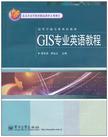GIS专业英语教程
出版时间:2010-10 出版社:电子工业出版社 作者:明冬萍,刑廷炎 主编 页数:309
前言
本书是北京市高等教育精品教材立项项目。根据北京市高等教育发展规划的精神以及地理信息系统专业培养教育目标,本着GIS专业多学科交叉、多技术融合的学科特点,结合地理信息系统相关专业多年的教学和实践,编写了这本教材。本教材可用做地理信息系统相关专业本科生“GIS专业英语”课程的阅读和写作材料,也可作为相关专业研究生以及广大教学科研人员工作、学习的参考资料。教材内容共分四大部分。第一部分为Fundamentals of Geographic Information Sciences,共分四章,介绍地理信息科学的基础知识,包括绪论、空间数据基本理论、GIS空间分析及GIS的发展和类型。第二部分为Advances and Hot Points in GIS,共分四章,介绍GIS学科发展的前沿问题和关键技术,包括WebGIS关键问题、GridGIS发展、空间数据渐进传输和3D GIS的发展与关键问题等。第三部分为Related Techniques of Geoinformatics,共分四章,介绍遥感技术基本原理、遥感技术的发展趋势、GPS基本原理及3S集成等具体内容。最后一部分为Appendix,侧重GIS科技英语的写作,包含四方面的内容,分别为GIS术语、地理信息领域相关有影响力的国际学术期刊汇总、科技英语写作规范和技巧,以及与科技论文投稿相关的知识和例文。本教材由中国地质大学(北京)信息工程学院明冬萍主编,主持制定了本教材的编写大纲、对全书进行统稿、编写、审校和定稿。邢廷炎副主编参与了对全书的审校。邢廷炎、王晓延参加了第一部分四个章节部分内容的资料收集和编写。张伟、王雨双参加了第二部分四个章节部分内容的资料收集和编写。王晓延、方坤参加了第三部分四个章节部分内容的资料收集和编写。第四部分由明冬萍收集和编写。在本书的编写过程中,得到了学校教务处、信息工程学院、教研室以及教学组各位领导和同志的大力支持,王群教授和刘湘南教授对本书的编写提供了很多建设性意见,在此表示感谢!感谢Natural Resource Canada以及书中其他下标引用和参考文献引用出处及原作者提供的资料和帮助!另外感谢硕士生张真鲜、本科生李龙翔、宋卓沁在资料收集过程中的帮助!他们的指导和帮助是本书得以完成的最大支持,再次表示深深的谢意!
内容概要
《GIS专业英语教程》属于北京市高等教育精品教材立项项目。全书内容共分为四大部分:第一部分介绍地理信息科学的基础知识;第二部分介绍GIS学科发展的前沿问题和关键技术等;第三部分介绍遥感技术的基本原理和发展趋势、GPS基本原理及3S集成等具体内容;第四部分侧重介绍GIS科技英语的写作,包括GIS术语、地理信息领域有影响力的国际学术期刊汇总、科技英语写作规范和技巧,以及与科技论文投稿相关的知识和例文。 《GIS专业英语教程》可用做地理信息系统相关专业本科生“GIS专业英语”课程的阅读和写作材料,也可作为相关专业研究生以及广大教学科研人员工作、学习的参考资料。
书籍目录
Part I Fundamentals of Geographic Information Sciences Chapter 1 Introduction to GIS 1.1 Geomatics and GIS 1.2 Background and History of GIS 1.3 Components of GIS 1.4 Principal Functions of GIS 1.5 Application Scope of GIS Chapter 2 Spatial Data and Related Issues 2.1 Concept of Spatial Data 2.2 Data Capture 2.3 Geo relational Data Model 2.4 The Spatial Data and the Attribute Data 2.5 Coordinate Systems, Projection and Registration 2.6 Vector and Raster Data Structure 2.7 Thematic Mapping 2.8 Resolution and Scale of Spatial Data Chapter 3 Spatial Analysis and Functions of GIS 3.1 Proximity Analysis (Buffering) 3.2 Overlay Analysis 3.3 Spatial Statistics 3.4 Network Analysis 3.5 Modeling 3.6 Some Real Life Examples Chapter 4 Types of GIS 4.1 Four dimensional GIS 4.2 Multimedia/Hypermedia GIS 4.3 WebGIS 4.4 Virtual Reality GIS 4.5 Real time GIS Part II Advances and Hot Points in Chapter 5 WebGIS and the Key Issues Chapter 6 GridGIS: Direction of GIS Chapter 7 Progressive Transmission of Spatial Data Chapter 8 3D GIS and Its Developments Part III Related Techniques of Geoinformatics Chapter 9 Fundamentals of Remote Sensing Chapter 10 Development Trends in Remote Sensing Chapter 11 Fundamentals of Global Positioning System Chapter 12 Integration of GIS, RS and GPS Part IV AppendixAppendix AGIS Dictionary Appendix BEnglish Journals on Geoinformatics Appendix CWriting of Scientific Paper
章节摘录
插图:2. 6. 3 Comparisons Between Vector and Raster Data StructureA data storage structure may or may not incorporate topological information, describing not only an objeet's position, but also its spatial relationships with respect to neighboring objects. Topological information is important for many kinds of analyses, including automated error detection, windowing for analysis and graphic presentation, network applications, determining whether a point falls in a specific polygon, proximity operations, polygon overlay, and other intersection procedures (Peucker and Chrisman, 1975). However, if your application does not require this kind of detailed information about the relationships between spatial objects, the additional overhead of explicitly treating topology may significantly complicate the tasks of database creation and update. For example, unstructured vector lists may be perfectly adequate for some kinds of routine data display.Some kinds of topological information are implicit in spatial data. In a simple raster-structured data file, for example, there is a specified spatial organization for the data, with no gaps in the fabric of the database. The regularity in the array provides an implicit addressing system. This permits rapid random access to specified locations in the data-base. Thus, we know immediately those cells that are adjacent to any target location, and we can easily find and examine those regions that bound a specified group of cells. Topological information in vector structures is often coded explicitly in the database. Line segments within DIME files, for example, have identifiers and codes for the polygon on either side. When needed topological relationships are not explicitly coded in vector data structures, it can be relatively expensive and time-consuming to get the system to come up with them. For example, in some operational systems, data entry from maps starts with a digitizing process that does not require that the operator explicitly relate various line segments and polygons that use these segments as parts of their boundaries. Instead, after the operator creates what is sometimes called cartographic spaghetti, a batch process link points, lines, and polygons together into a topologically structured database. This is another illustration of the trade-off between the efforts expended when developing a database and additional storage costs versus costs and speed during analysis and retrieval.
编辑推荐
《GIS专业英语教程》:高等学校专业英语教材,北京市高等教育精品教材立项项目。
图书封面
评论、评分、阅读与下载
用户评论 (总计11条)
- 对GIS专业来讲很有用
- 书后面的GIS 字典很给力
- 全英文,刚开始接触不习惯!
- 明老师出品!!!
- 这是我们明老师的书,顶是必须的
- 内容很好,体系不错,既然是GIS专业英语,包括了GIS和RS方面的基础知识,和相关热点问题讨论。但是可能字体或是印刷,感觉看起来眼睛不舒服,而且若是相应引用英文原文相关内容就会更好,这样就可以不受“中国式汉语”的影响了
- 拓宽知识面和专业知识领域,是GIS专业学生必须要看的书和教材。
- 专业GIS英语书不多,有中文对照就更好了
- 包装很好,保存也很完整。在卓越买书的确是一种享受。
- 是本好书,吸收了国外编者的一些方法,读起来不会觉得很难懂晦涩。另外这本书讲得很全面,适合本科生学生使用,但是英语的水平得要好一点!
- 这本书挺 适合我们用的、、质量也不错、
